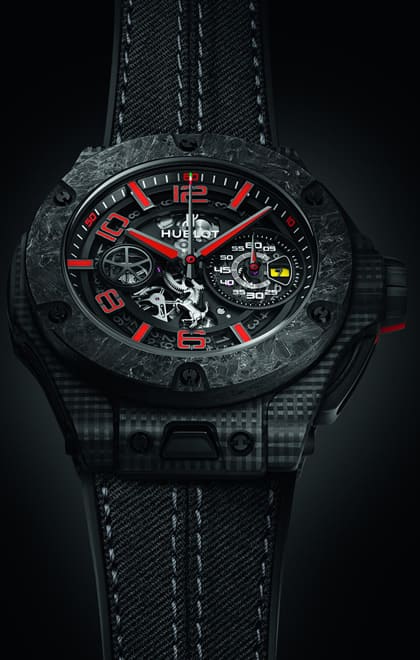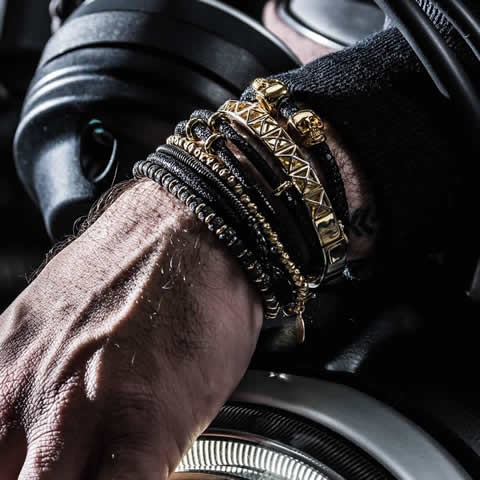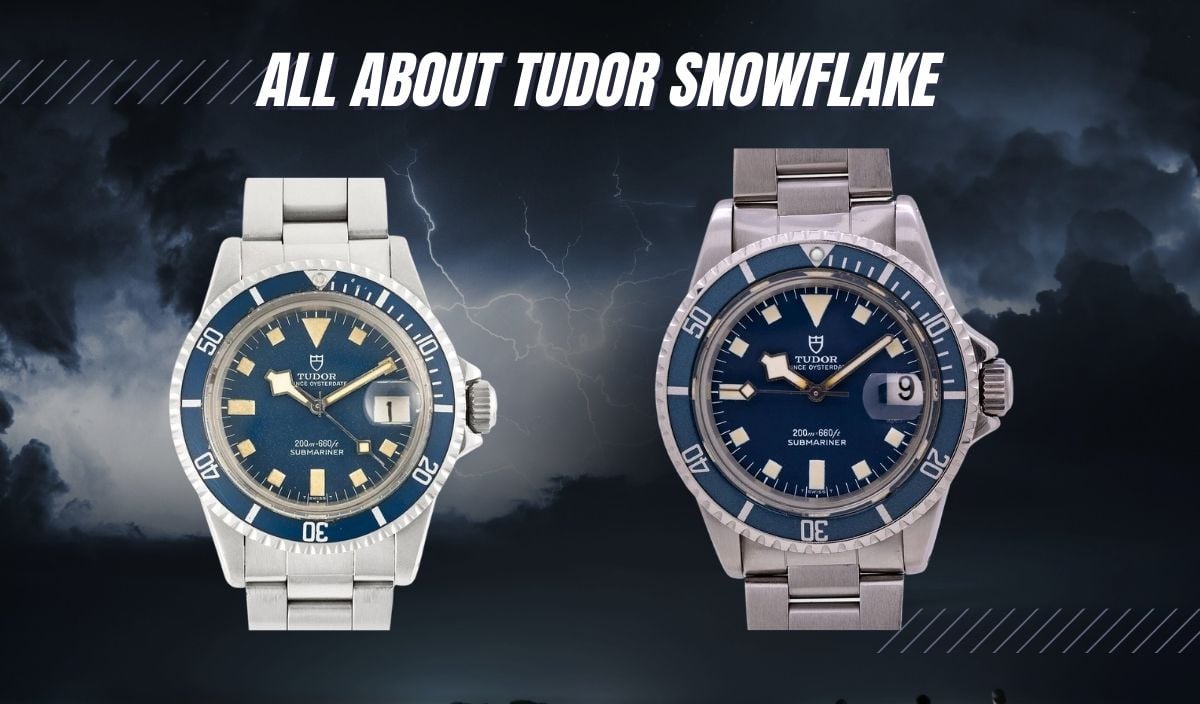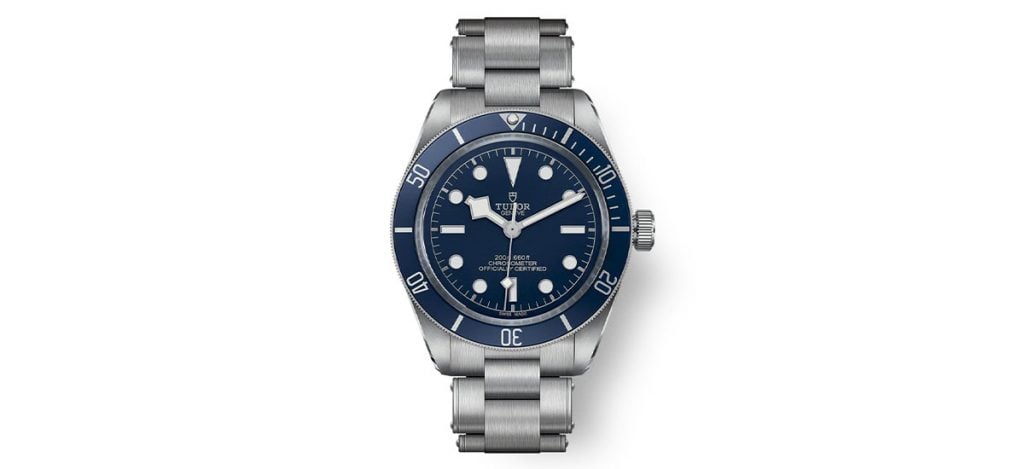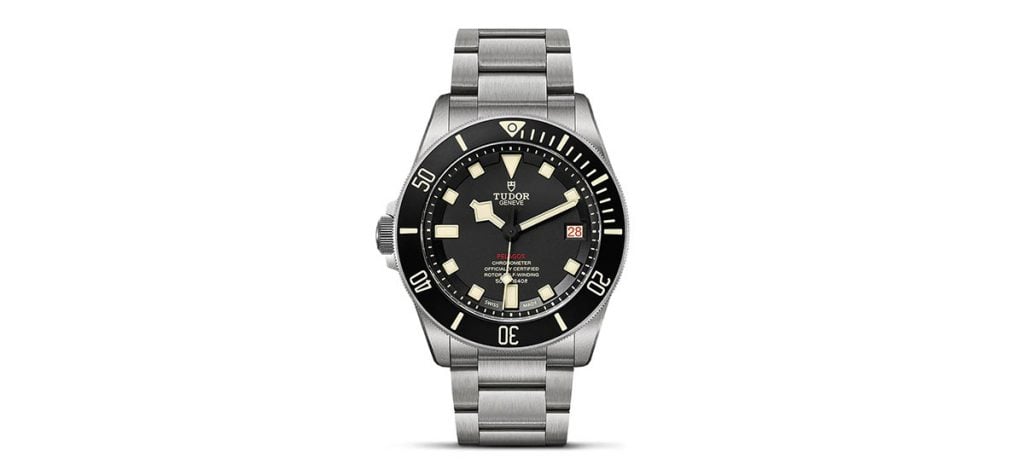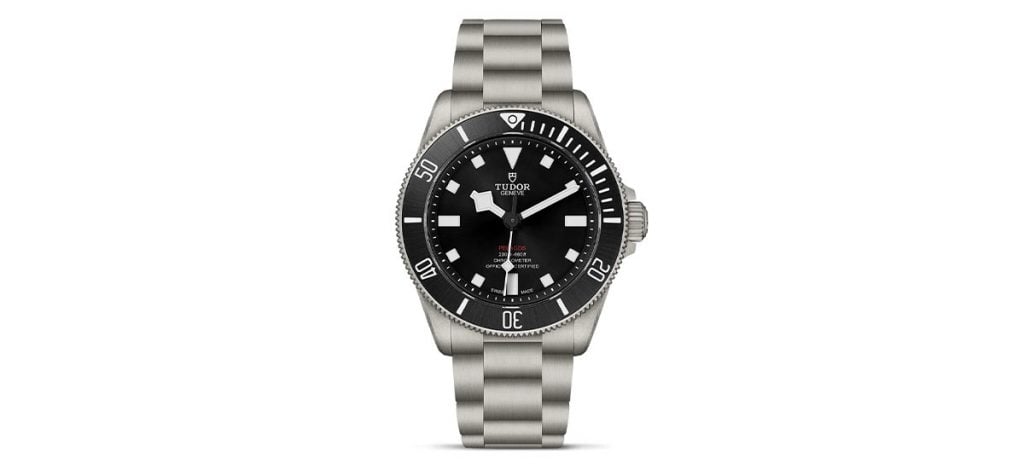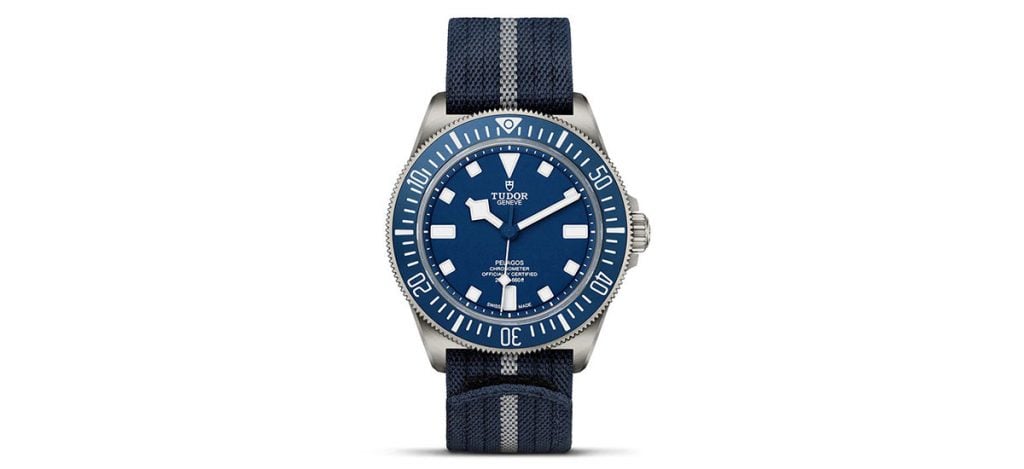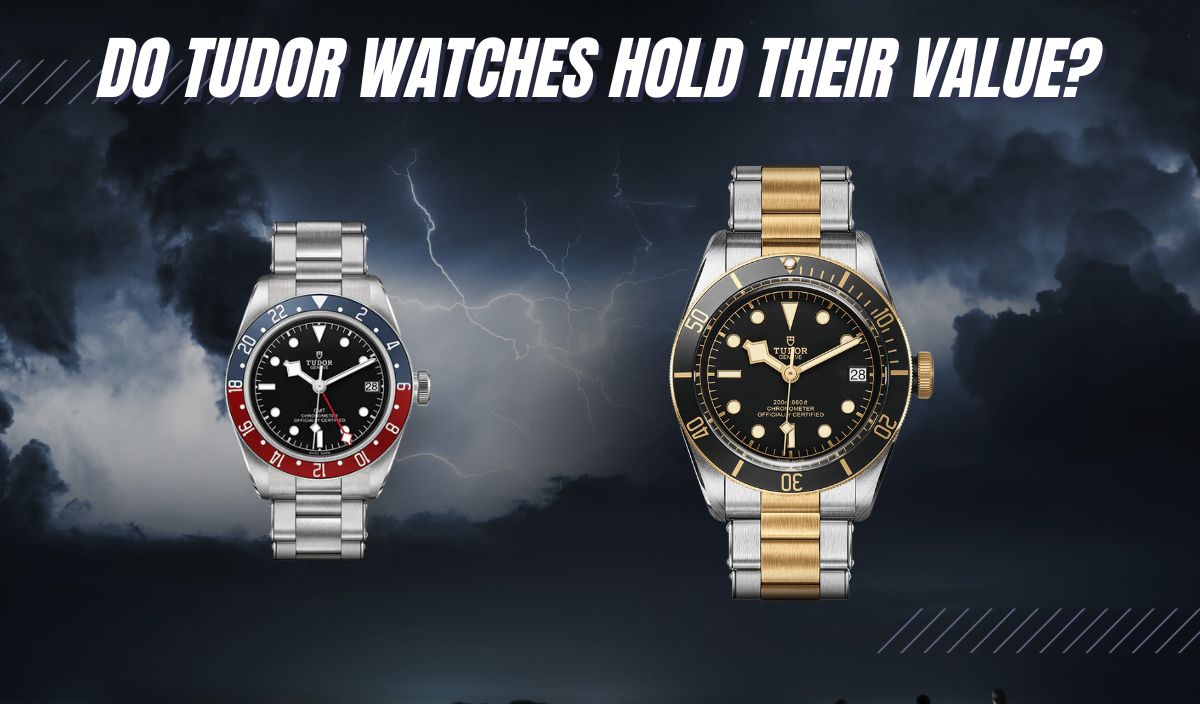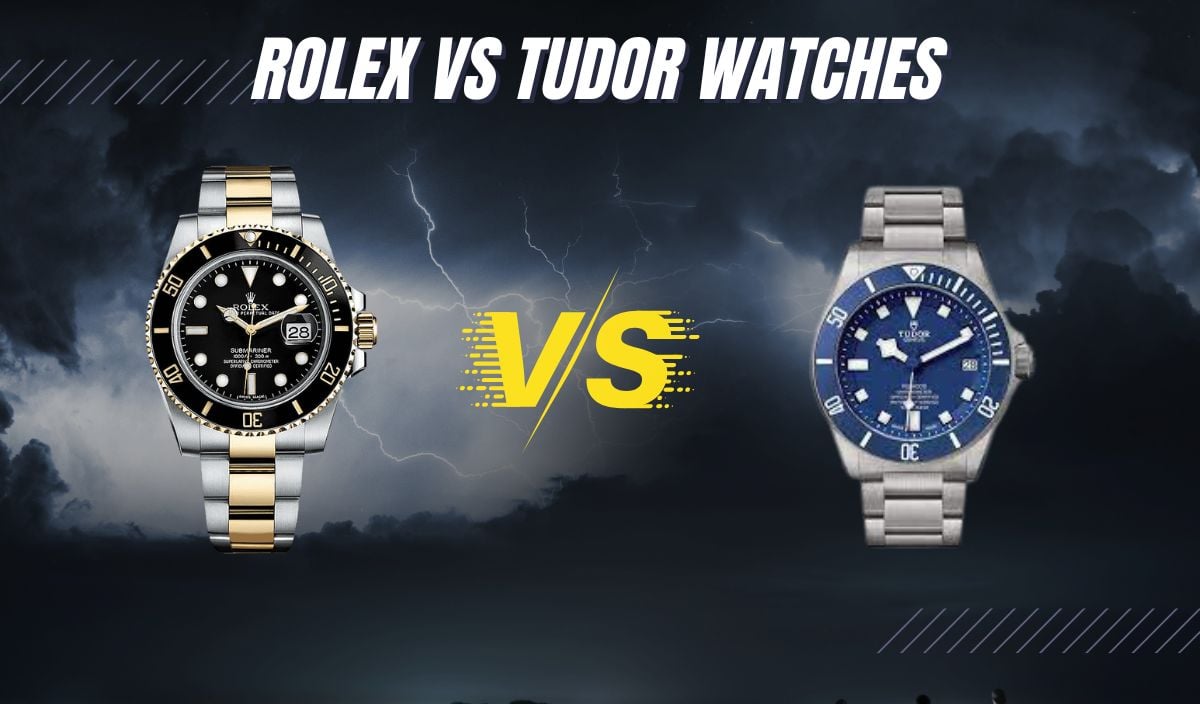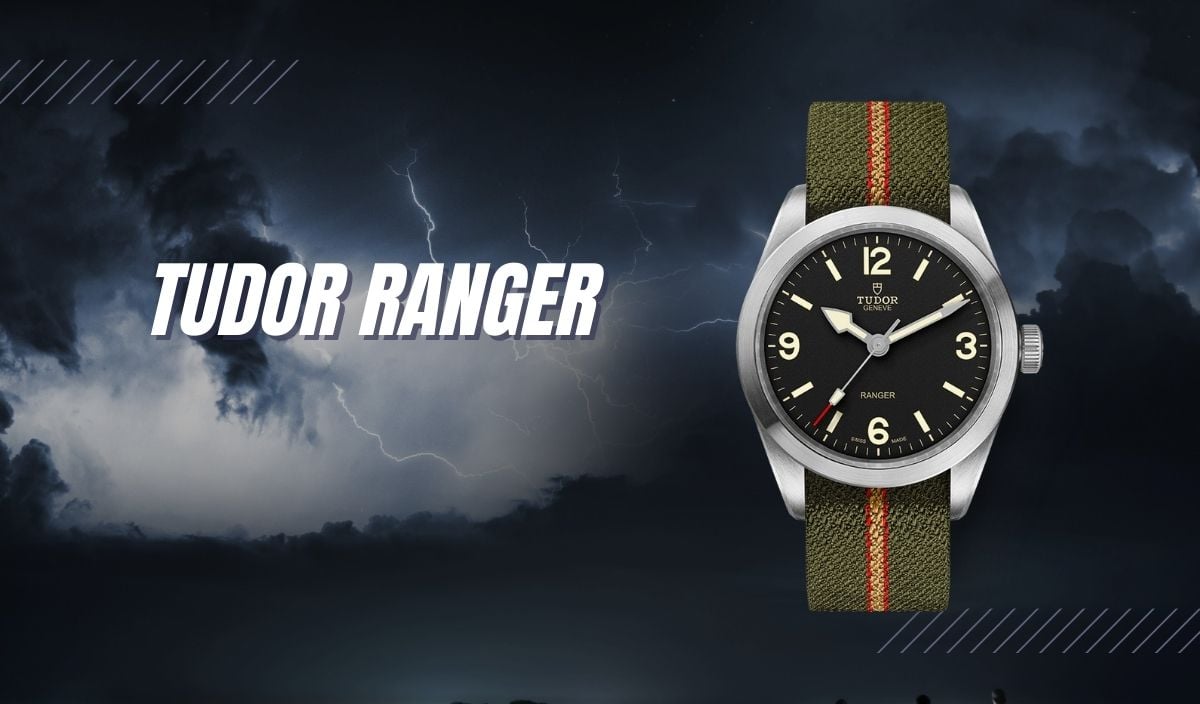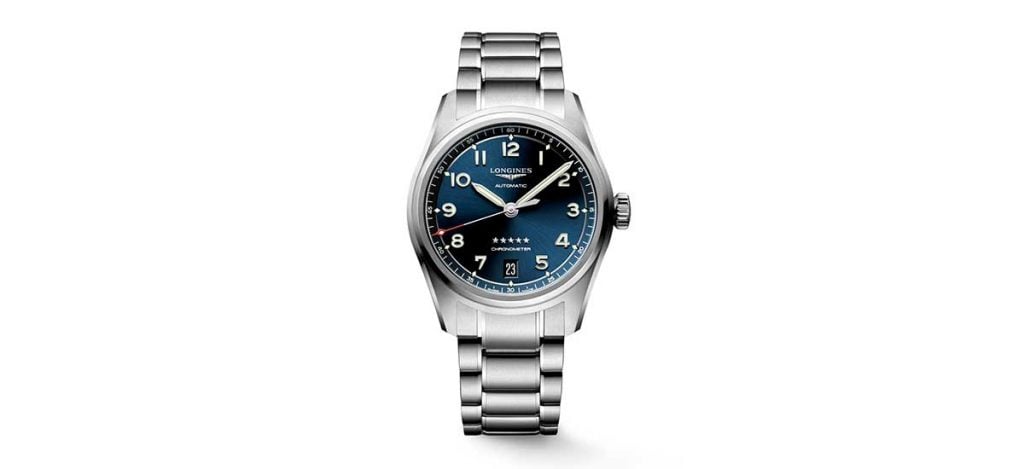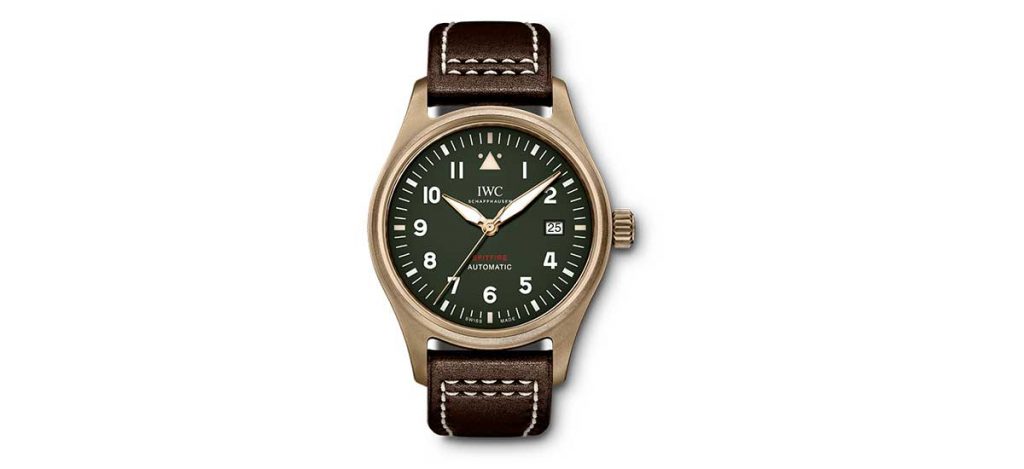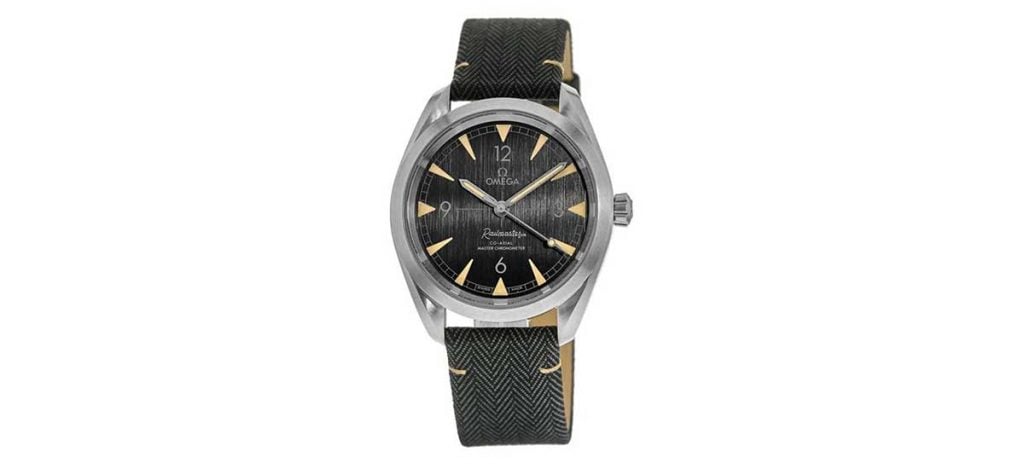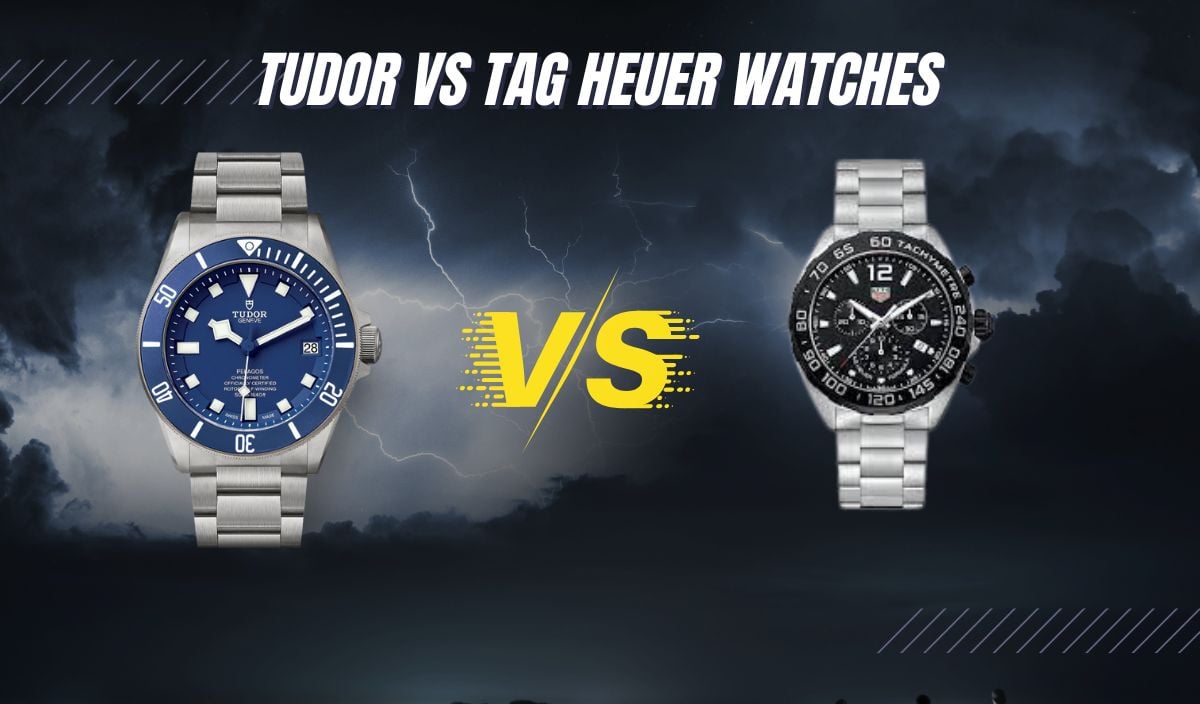
It’s safe to say that in today’s watch world, we have more access to more brands than ever before. But, somehow, in the sea of microbrands, revival brands, and options, we, as enthusiasts, are still drawn to the offerings from manufacturers who have provided the consumer with quality timepieces for decades.
So, it is no surprise, when discussing watches, even with the most freshman of enthusiasts, that Tudor and TAG Heuer are generally in the discussion. For many, Tudor and TAG (as I’ll be referring to it moving forward) are the perfect entry point into the luxury watch “hobby”.
While some collectors might find these brands boring, even predictable, they are still powerhouses in the world of watches and offer us, the consumer, an incredible product that we can be proud to own. So, let’s dive into the world of Tudor and TAG and figure out which iconic brand is right for you.
About Tudor (The Watches, Not the English Royal Dynasty of Welsh Origin)
For those new to the “hobby”, Tudor has quite an interesting history, one steeped in mystery, intrigue, and an attempt to take over the watch world!
Just kidding. The Tudor trademark was originally registered in 1926 for Hans Wilsdorf by Veuve de Philippe Hüther, a Swiss watch dealer. If the name Hans Wilsdorf sounds familiar, it’s probably because you know him as the founder of one of the most recognizable brands in not only the watch but the entire world, Rolex.
In 1936, Wilsdorf took over the Tudor name, creating, for all intents and purposes, a more affordable alternative to its big brother, Rolex. But, it wasn’t until 1946 that the “Montres TUDOR S.A” name was established as a way to enter new market segments with the backing and guarantee of the Rolex name.
The idea that Tudor, for the longest time, seemed to live in the shadow of its big brother was one reason the company decided to remove all Rolex-branded components from their watches. So, in 1996 and in honor of their 50th anniversary, they did just that.
The remainder of the ’90s and early 2000s saw a decline in sales. So much so that in 2004, Tudor stopped selling watches in the US market. While this was certainly a hit to Tudor’s market share, it wasn’t long until Tudor would make its comeback stateside.
In 2013, a refreshed and rebranded Tudor re-entered the US market, focusing on the brand’s illustrious history as a tool watch manufacturer, taking many of their design cues from the Tudor archives.
With the use of both in-house and off-the-shelf movements, Tudor had certainly made a splash in the watch scene as it made its way back to the US, proving once again that they could still turn heads with great classic designs that never go out of style.
So, it’s no surprise that for their almost 100-year history, the Tudor name, regardless of Rolex, has been synonymous, for most enthusiasts, as a highly capable and historically proven tool watch manufacturer.
Some of the best examples of tool watch excellence in the Tudor archives are the Milspec Tudor “Snowflake” timepieces made for the Marine Nationale and many other military forces around the world, including the USA and UK forces.
But the modern Tudor lineup offers many excellent tool and casual watches that are sure to be a mainstay in your collection for years to come.
TAG You’re It (Time for a History Lesson)
While the Tudor name is a relatively new name (comparatively) to some watch brands, the TAG Heuer name is much older.
Founded in 1860 by Edouard Heuer under the name Heuer Watchmaking Inc in St. Imier, Switzerland, the Heuer name has always been the embodiment of innovation, a bold style, and a unique design language that really became a signature for the brand during the middle of the 20th century.
In 1933, Heuer produced a new kind of dash counter for cars, boats, and airplanes. This new device, called the Autavia, would be the precursor to the chronographs that would adorn the wrists of pilots and drivers in the decades to come.
During the years leading up to WWII and the decades that followed, Heuer would focus on Chronography and aim to create the most accurate chronographs the watch world had ever seen.
1958 was a big year for Heuer. It was the year that Jack Heuer would join the company and begin a legacy that endures to this day, with the creation of some of Heuer’s most iconic timepieces like the Autavia, Monaco, and Carrera.
In fact, it was Jack Heuer who made the name Heuer synonymous with motorsports. While cars and watches have always gone together like Richard Mille and compensating for something (just kidding!), Heuer would bring together some of the most famous racers and watch relationships in the racing world.
While the ’60s and ‘70s were the golden eras for motorsports, it was in 1973 when Jack Heuer inked a deal with the biggest name in motorsports history, Enzo Ferrari, making Heuer the official timekeeper of the Ferrari Race Team.
Heuer would go through its ups and downs through the later part of the century and would eventually be acquired by TAG (Techniques d’Avant Garde) in 1985, forming what we now know as TAG Heuer.
TAG has always been at the forefront of design and innovation and, to this day, offers enthusiasts everything from entry-level Swiss quartz models to models worn on the wrists of Hollywood royalty like Steve McQueen.
So, if you are looking for a timepiece whose history has a definite cool factor, one that will make you feel like a Formula 1 playboy (or girl), TAG will always have something to adorn your wrist.
Tudor vs TAG: Battle of the Icons
I think as a consumer, when it comes to purchasing a luxury watch, it is important to be informed so you have the information you need when making a decision, especially one that involves more times than not a hefty price tag.
With that said, I want to take some time to compare Tudor and TAG. We will be discussing brand recognition, model variety, build quality & durability (materials, water resistance, etc.), movements, and price/availability/resale value.
Brand Recognition
Firstly, I think it is important to understand what brand recognition is. Brand recognition is the ability of consumers to recognize an identifying characteristic of one company versus a competitor.
With that said, I think both brands have rich histories and accomplishments that rival any other brand in the watch industry.
Tudor has its brand recognition in the world of tool watches and milspec divers, while TAG has its brand recognition in the world of motorsports. While yes, I understand that both brands are known for so much more, I think we can distill it down to these two worlds in regard to what Tudor and TAG are most famous for.
While both Tudor and TAG won’t carry the same recognition as, say, Rolex, AP, or Patek, I still believe that from a brand recognition standpoint, you can go anywhere in the world and find someone who knows these two brands. Which depending on where you are in the world, could be a good or a bad thing.
Regardless, both brands offer name recognition to watch nerds and common folk alike. With beautiful designs, both are sure to impress and turn heads no matter where you might go.
Model Variety
When purchasing a timepiece from iconic brands, you will likely have certain expectations. One of those expectations being variety. I don’t think it is unfair as a consumer to want options, and when we look at both the Tudor and TAG catalog, we have plenty.
Now I know what you’re thinking. Tudor really only invests its time and efforts into the Black Bay collection, and TAG really only focuses its efforts on the heritage lines. While you aren’t necessarily wrong, both brands offer an array of collections that is sure to appeal to all sorts of enthusiasts.
I urge you to go into both the Tudor and TAG catalog and look at options outside what the brands are most known for. For example, while doing some research for this article, I found myself rediscovering the unique beauty that is the TAG Link and the brutalist design that is the Tudor P01.
Both unique in their own right and far from the popular kid in class, these two examples show that the variety is there; you might just need to expand your horizons a little.
Build Quality & Durability
I believe as a consumer, build quality and durability should be a major deciding factor when choosing the right timepiece for you. Especially depending on the application in which you will be utilizing your watch. Are you a shirt-and-tie office guy, a delivery driver, or a construction worker?
Different professions will put you and your watch in different scenarios. With that said, depending on your day-to-day, it is important to make sure you have a good durable, and reliable timepiece. It goes without saying that both Tudor and TAG make incredibly durable watches.
Being that we are discussing “modern” Tudor and TAG, many of their collections tend to lean into the tool watch category, which means their robust build quality offers the owner assurance that it can take a few bumps and drops.
This is due to their use of modern materials, like sapphire crystals and more refined case materials, which ensure proper water resistance and anti-magnetic properties.
For what it’s worth, I believe that with their use of more unique case materials like carbon, ceramic, and titanium, just to name a few, TAG gives the consumer more options when searching for something different and/or unique.
Movements
If you ask me, the battle of in-house vs. none-in-house movements has gotten a little out of control over the last decade or so.
Some will argue that a lot of what you’re paying for is the movement, which makes consumers a little angry when they end up paying a premium for an off-the-shelf movement because of the name on the dial, hence the reason for wanting an in-house movement for their money.
But, while I understand that sentiment, I’d argue that the movement inside, while obviously playing a very big factor in the watch, being the beating heart and all, needs to do one thing, keep accurate time.
So, whether it is an in-house movement or off the shelf if it is performing the way it should, there shouldn’t be an argument. Luckily, for those of us who are impartial to the argument, both Tudor and TAG offer timepieces with in-house movements and off-the-shelf ETA movements, both with COSC-certified options.
The two in-house movements that have proven to be reliable, accurate, and durable are Tudor’s MT5602 seen in the Black Bay line, and TAG’s venerable Caliber 11 seen in the Monaco.
Price, Availability, and Resale Value
Both Tudor and TAG offer tons of options under $5,000, which seems to be the top end of the budget for many new enthusiasts trying to find their first luxury watch. While both brands have watches above that threshold, they still very much play ball within that ballpark.
When discussing availability, you’ll be happy to hear that both Tudor and TAG have boutiques in many cities and are also sold in major jewelers, depending on where you live. This means that the availability is there but with a few caveats. One of those being when new models are released.
Generally speaking, when the new hype comes out, there is definitely a wait but worry not, you won’t be waiting around for the better part of your formative watch collecting years for a one *cough cough* Rolex.
The second being rare models. There are some limited editions for both Tudor and TAG that will always be more difficult to find.
The watch community is funny. I think collectors fall into two categories, those who genuinely love their collection and rarely part ways with any of it and those who are always on the hunt for the next timepiece. While they might not be considered a flipper per se, they are in love with hunting and the rush of finding a new timepiece.
This ultimately leads them to research the resale value of the timepieces they are buying. Good and bad news for that type of enthusiast. Both Tudor and TAG offer amazing timepieces that, depending on the model, will retain most of their value. That said, with the exception of rare models, very few accrue value, especially in the volatile market that is timepieces.
Tudor vs TAG: Top Model Comparison
In this next section, we are going to break down some of Tudor and TAG’s top models, compare them, and give you a chance to see how they stack up to one another. We will be discussing a chronograph, a diver, and a simple three-hand timepiece.
| Model | Tudor Black Bay Chrono | TAG Heuer Carrera Sport Chronograph |
| Case Size | Diameter: 41mmThickness: 14.6mmLug-to-Lug: 50.1mm | Diameter: 44mmThickness: 15.27mmLug-to-Lug: 51mm |
| Materials | Stainless Steel case with fixed 316L steel bezel and a matte black anodized aluminum insert | Stainless Steel case with a black ceramic bezel |
| Water Resistance | 200m/660ft | 100m/330ft |
| Movement | In-house Calibre MT5813 (COSC) with a 70-hour power reserve.Beat Rate of 28’800 (4 Hz) | In-house Calibre HEUER02 Automatic with an 80-hour power reserve.Beat Rate of 28’800 (4 Hz) |
| Strap Options | Available on a steel bracelet, fabric strap, leather strap | Steel Bracelet |
| Additional Features | Faux-rivet style bracelet for the vintage enthusiast and Panda/Reverse Panda dial options | Black, Blue, and Green dial variants.There is also a guild-dialed variant on a leather strap. |
| MSRP | $5,450 | $6,400 |
| Model | Tudor Black Bay Fifty-Eight | TAG Heuer Aquaracer Professional 200 Date |
| Case Size | Diameter: 39mmThickness: 11.9mmLug-to-Lug: 48mm | Diameter: 40mmThickness: 11.54mmLug-to-Lug: 47mm |
| Materials | Stainless Steel case with unidirectional dive bezel in steel with matte black anodized aluminum insert | Stainless Steel case with a brushed steel unidirectional dive bezel |
| Water Resistance | 200m/660ft | 200m/660ft |
| Movement | In-house Calibre MT5402 (COSC) with a 70-hour power reserve.Beat Rate of 28’800 (4 Hz) | Calibre 5 Automatic (Non-In-House, ETA 2824-2) with a. 38-hour power reserve.Beat Rate of 28’800 (4 Hz) |
| Strap Options | Available on a steel bracelet, fabric strap, leather strap | Stainless Steel bracelet with folding push button clasp |
| Additional Features | Comes in 10 different variations.Yellow Gold and Sterling Silver case options available | The Aquaracer men’s line comes in 30 different variants. Sized at 40mm, 43mm, and 45mm. Available in GMT and Chronograph variants. |
| MSRP | $3,950 | $2,850 |
| Model | Tudor Black Bay | TAG Heuer Carrera Date |
| Case Size | Diameter: 31/36/39/41mm | Diameter: 39mmThickness: 11.5mmLug-to-Lug: 47.3mm |
| Materials | Stainless Steel Case with Polished and Satin Finish a Stainless Steel Bezel | Brushed and Polished Stainless Steel Case with Polished Stainless Steel Bezel |
| Water Resistance | 100m/330ft | 100m/330ft |
| Movement | In-house Calibre MT5602 (COSC) with a 70-hour power reserve.Beat Rate of 28’800 (4 Hz) | Calibre 5 Automatic (Non-In-House, ETA 2824-2) with a. 38-hour power reserve.Beat Rate of 28’800 (4 Hz) |
| Strap | Stainless steel bracelet, polished and satin finish, with “T-fit” folding clasp and safety catch | Black Leather Strap with Stainless Steel Folding Push Button Clasp |
| Additional Features | Comes in four case diameter variants with three dial color options, blue, anthracite, champagne. | Slim design with 6 o’clock date and lume at the hour indices and hands |
| MSRP | $3,950 | $3,050 |
Tudor vs TAG Heuer Watches: A Final Take
After falling down the Tudor and TAG rabbit hole while researching for this article, I became an even bigger fan of both brands.
Not only do they both manufacture some unbelievably great timepieces, but they’ve also been doing it long enough to know what works and what doesn’t, giving us the enthusiast options that will always feel at home on your wrist.
So, if you’re looking for your next timepiece and can’t decide between the two, take a minute to look through the catalogs and find one that calls to you.
Maybe you’re looking for a funky and chunky tool watch that will help you stand out from the crowd (hint: BB P01), or maybe like me; you think it’s hip to be square (hint: TAG Monaco in Titanium) and want to feel like your Hollywood hero.
Regardless of what you’re looking for, Tudor and TAG will make you smile every time you look down to check the time because these two iconic watch brands will always find a way to make us remember what it is that drew us to the world of watches.

